
|

|
|
Home Site Search Contact Us Subscribe
|
|
|
Best Architecture Books of 2010 Ten books pointing the way to larger professional horizons By Norman Weinstein December 3, 2010 Eric J. Cesal, Down Detour Road: An Architect in Search of Practice (The MIT Press, $21.95). This coming-of-age memoir of a young architect should prove equally illuminating to oldsters because of Casel’s witty and penetrating analysis of the need to align professional shibboleths with real-world economic realities. Where else in architectural literature can you heed a voice laced with the deadpan worldly humor of a Huck Finn, the commonsense of a Stoic, and the idealism of a 20-something who finds himself in post-Katrina New Orleans suffering, but smiling. One generation’s odyssey, post-graduation, learning architecture in the studio disasters mercilessly built.
Thomas Fisher, Ethics for Architects: 50 Dilemmas of Professional Practice (Princeton Architectural Press, $24.95). Professional Codes of Ethics are often boringly scribed “ought to” wish lists. Ethics in architecture might best be learned through penetrating case studies, through untying knotty dilemmas. Written with disarming directness and simplicity, Fisher offers sage ethical guidance through re-purposing the idea of “lifecycle costing” (for us mystics “karma?”) when deciding whether you’ve acted ethically in your practice, with particularly invaluable examples for the U.S. design juggernaut working in China and the Middle East. His postscript could have been preface: “In a depressed economy, ethics may seem extraneous: something nice to do once we pay the bills. But the opposite is true.”
Mark Garcia, The Diagrams of Architecture (AD/Wiley, $85). If you value the drawings and doodles starachitects leave on cocktail napkins as manna-droppings, Garcia’s gallery of original drawings by the obscure as well as Fountainheads you’ll find even more entertaining. As 21st-century designers increasingly work with “flow” in the forefront of their thinking, diagrammatic thinking evolves from simple shorthand to complex mapping of multi-dimensional territories. The scholarly text can be rough going, but the wild diagrams absolutely justify the price of admission.
Philip Jodidio, Shigeru Ban: Complete Works 1985 -2010 (Taschen, $150). This weighty and slick and pricey coffee table book of Japan’s greatest “Nordic” architect – dare you to leaf through 10 pages without thinking of Aalto Orientalized – puts photographically in your face why Ban might just be Japan’s most profoundly versatile architect of our time – period. There’s the obvious irony of making emergency shelters with enough sexiness to end up in a high-end eye-candy volume like this. Then there’s the additional irony of paper structures heralded in this deluxe book, one aimed at those with deep pockets who might marvel at a paper shelter – but NIMBY. Lightweight text, but the photography is as graceful as Ban’s way with the lightest of materials made monumentally memorable.
Charles Jencks and Edwin Heathcote, The Architecture of Hope: Maggie’s Cancer Caring Centres (Frances Lincoln, $60). Not all healthcare facilities present similar design challenges, and the hybrid form of Maggie’s Centres offers cancer patients a unique blend of meditational, educational, and therapeutic spaces for rest and reflection. Despite much of the accumulated and often justified boredom surrounding starchitect self-aggrandizement, here are exquisite healing spaces by Frank Gehry, Zaha Hadid, and Richard Rogers. Celebrity architects as occasional secular saints? Rare is that architecture that can instruct us about how to live and how to die. This book makes the Stars just like us in their quest for the imaginatively caressing spaces cushioning crucially painful life passages.
Giovanni Curatola, Turkish Art and Architecture: From the Seljuks to the Ottomans (Abbeville, $95). There is a trick in finding an erudite, but not academic tone, in introducing the majesty of Islamic classical architecture to a wide audience of Western readers. Curatola looks lovingly at Turkish art and architecture from a span across the 10th to 19th centuries, matching intricately detailed descriptions with 250 striking photographs, with images of some of the most devoutly illuminating Mosque architecture ever seen between book covers. And who would have guessed the impact Ming Dynasty porcelain plate design would have on the tiles of the Ottoman Empire, and how inspiring these motifs look through 21st-century vision?
George Ranalli, Research & Design: Faculty Work, The City College of New York - Bernard and Anne Spitzer School of Architecture (Oscar Riera Ojeda Publishers, $25). From the over-the-top Hotel Jellyfish for Tianjin, China, by Michael Sorkin that straddles a line between zoomorphic and dadamorphic design, all to way to the dignified apollonian civility of Ranalli’s Saratoga Community Center in Brooklyn, NY, the architecture students at CCNY luck out by having a teaching faculty practicing with so much visionary panache.
Jane Alison, editor, The Surreal House (Yale University Press, $70). Archigram’s merry pranksters gave legs to future British cities, but back in Paris between the wars, the surrealists gave urban housing erotic breasts, vertiginous stairways to nowhere, and fireplaces serving as toy train stations. Framed by a variety of informative (but unfortunately humorless) scholarly essays that offer a single epiphany – the deepest gift surrealism gave to modern architecture was the rebirth of the Gothic – the hundreds of color illustrations offer a remarkably discerning catalogue of bizarre architectural dreams that could ricochet into whimsically engaging follies for our time.
James P. Cramer and Jane Paradise Wolford, editors, Almanac of Architecture & Design 2010 (Ostberg/Greenway Communications, $149). Let’s get the nasty fact of the price tag for this 578-page paperback out of the way. If the reason for the inexcusable price point is attributed to this being the first full-color edition of this essential reference, how about publishing a special “recession” edition in black and white? That said, this encyclopedic yearbook ranks the top 333 largest architecture firms, lists damn near every architectural organization worth knowing in North American, and has comprehensive awards lists. You could save a bundle by researching all of this on the Internet for a year, so maybe the price is almost right?
Ruth Barnes and Mary Hunt Kahlenberg, Five Centuries of Indonesian Textiles (Prestel USA, $95). Simply the most spectacularly radiant book on textiles from any locale I’ve seen in years. But after a second look at nearly two dozen ikat patterns based on architectural motifs, the deep value of this art book for architects snapped into sharp focus. As building facades (through high-tech light show capacities) increasingly offer ever-changing, environmentally responsive, design possibilities, these traditional Indonesian textiles based on island architecture have astonishing lessons to teach. Even those textiles free of architectural designs tell stories about layering flashing colors and dramatically composing biomorphic motifs. And while the astute authors refrain largely from linking this priceless collection of fabrics to buildings, their obvious adoration and understanding of these textiles invite you to link them to every imaginable art, including the art of living well.
Norman Weinstein writes about architecture and design for Architectural Record, and is the author of “Words That Build” – an exclusive 21-part series published by ArchNewsNow.com – that focuses on the overlooked foundations of architecture: oral and written communication. He consults with architects and engineers interested in communicating more profitably; his webinars are available from ExecSense. He can be reached at nweinstein@q.com.
More by Weinstein:
A Meditation on the Beauty of Zaha Hadid's Door Handle Hadid's design issues a challenge: define beauty by lyrically playing with illusion.
Why "Greatest
Hits" Lists by Architecture's Stars Should Be Mocked
Celebratory Meditations on SANAA Winning the Pritzker Prize
Op-Ed: Life After Ada: Reassessing the Utility of
Architectural Criticism
Book
Review: "Architecture and Beauty: Conversations with Architects about a
Troubled Relationship": Yael Reisner exuberantly interviews architects
about beauty
Book Review: Shedding
Light on Concrete: Tadao Ando: Complete Works 1975-2010 by Philip Jodidio
Book Review: Sage
Architectural Reflections from Architecture's "Athena": Denise Scott
Brown's "Having Words" distills a lifetime of theorizing and practice
into practical and succinct guidance for thriving through difficult times
Book Review: Keeping
the Architectural Profession Professional: "Architecture from the Outside
In: Selected Essays by Robert Gutman" celebrates Gutman's legacy as
invaluable outsider
Book Review:
"Design through Dialogue: A Guide for Clients and Architects," by
Karen A. Franck and Teresa von Sommaruga Howard
Twilight Visions: Vintage Surrealist Photography Sheds
New Light on Architecture
Best
Architecture Books of 2009
Book Review: "Gunnar Birkerts: Metaphoric Modernist" by Sven Birkerts and Martin Schwartz A major architect in the history of Modernism finally receives recognition – and sundry asides about why Modernism never exited.
Book Review:
"Urban Design for an Urban Century: Placemaking for People," by Lance
Jay Brown, David Dixon, and Oliver Gillham
Book Review:
"Everything Must Move: 15 Years at Rice School of Architecture
1994-2009"
Book Review: A Subversive Book Every Architect Needs:
"Architect's Essentials of Negotiation" by Ava J. Abramowitz
Book Review: A Perspective from One Elevation: "Conversations With Frank Gehry" by Barbara Isenberg Gehry's conversations offer portraits of an astute listener as well as talker, an architect as aware of his flaws and limitations as of his virtues.
Best Architecture Books of 2008
Book Review: You've Got to Draw the Line Somewhere A review of Drafting Culture: a Social History of Architectural Graphic Standards by George Barnett Johnston
Book Review: "NeoHooDoo: Art for a Forgotten Faith," edited by Franklin Sirmans Sharpen your pencils - and get ready to do a NeoHooDoo shimmy.
|
(click on pictures to enlarge) 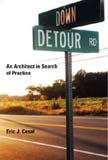

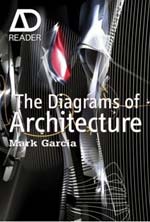
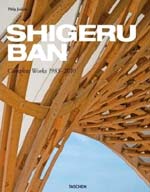
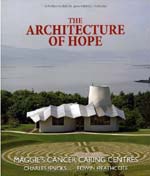
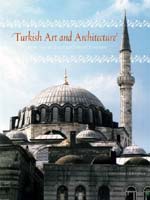
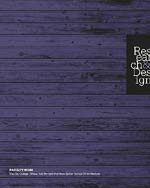
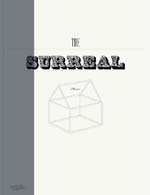


|
© 2010 ArchNewsNow.com